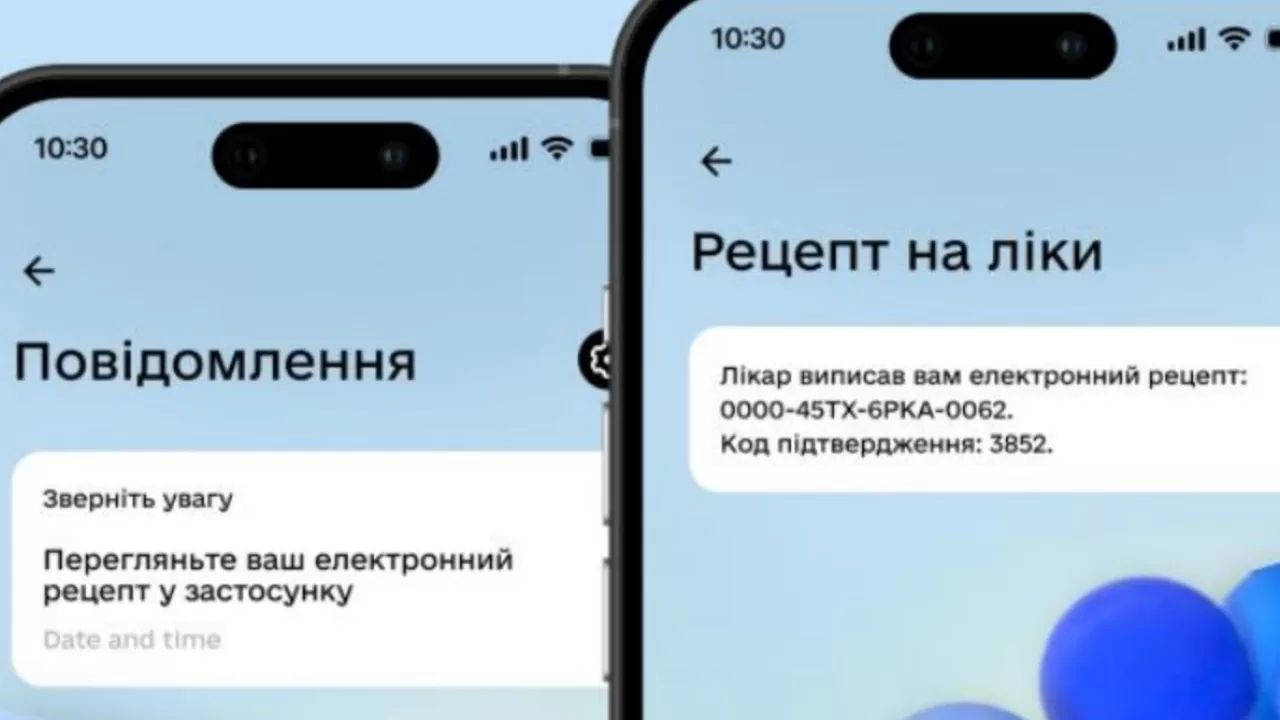
Medical Notifications in Diia: How E‑Prescriptions, Referrals, and Treatment Plans Became More Accessible to Ukrainian Patients
Starting in 2025, Ukraine’s healthcare system took another step toward digitalization. Now, electronic prescriptions, referrals, and treatment plans are not only available in the eHealth system but also delivered directly through the Diia app. This move is being presented as innovative. But what’s really behind it? Does it actually improve patient access to care, or is it just an additional layer of notifications?
The Diia app now sends medical notifications that cover:
- the creation of an electronic prescription;
- cancellation of a prescription by the doctor;
- the creation of a referral;
- the issuance of a treatment plan.
These are push notifications stored in the “Messages” section of the app. If the user doesn’t have Diia installed or isn’t logged in, messages are sent via Viber or SMS.
The idea is to simplify access to medical information, making it easy to store and use. For example, there’s no longer a need to dig through texts for a prescription code it’s right there in one place.
What hasn’t changed
It’s important to understand: the core system remains the same. As before, electronic prescriptions are issued via eHealth, not Diia. The eHealth platform remains the main infrastructure, while Diia is just an interface for patient confirmation.
This means:
- the process of issuing a prescription hasn’t changed;
- there’s no new functionality for pharmacy interactions;
- the full content of the prescription isn’t shown in Diia just the code and medication type.
So the quality of medical service itself hasn’t improved, but patients now have better control over the process.
What’s the real benefit
Despite limited functionality, real-time notifications are a meaningful improvement. Many patients especially the elderly or those with chronic conditions don’t always find out about new prescriptions or referrals quickly. So now:
- they can pick up medications promptly, without follow-up calls;
- they can verify whether the doctor actually issued the prescription;
- they can track medical activity, which is helpful when sharing info with family or another specialist.
The Ministry of Digital Transformation emphasized that this is only the first wave of digital tools in healthcare. As Mykhailo Fedorov stated, “Every week, we launch new services that simplify life, eliminating bureaucracy, queues, and corruption.”
Post List
The digital infrastructure: what’s next?
Beyond medical notifications, several new services are expected to appear soon in Diia, including:
- AI Assistant – a national artificial intelligence that provides state-issued documents and consultations;
- e-Notary – fully online notarization;
- e-Excise – checking the legality of alcohol and tobacco using QR codes;
- Wounded Warrior Pathway – a digital support system for wounded service members and their families;
- Basic Social Assistance – a single application for all social benefits;
- Criminal Record Certificate with Apostille – ordering and delivery without in-person visits.
All of these services share a common goal: to make Diia the central point for interaction with the state. And medical notifications are just the first step toward healthcare integration.
Unresolved questions
Despite the positives, there are still several structural challenges:
- Not everyone has a smartphone or stable internet. Rural residents, seniors, and people with disabilities may be excluded from this functionality.
- This doesn’t replace the doctor. Diia doesn’t display full treatment plans, medication details, or explanations. Without a consultation, the function is limited.
- Data security concerns. As Diia handles more sensitive information, including health data, the need for advanced cybersecurity grows.
Medical notifications in Diia are a logical continuation of digital services, not the final destination. They enhance access to existing tools, improve communication transparency, and reduce mistakes and misunderstandings. But no notification system will solve the core challenge: how to make healthcare high-quality, accessible, and personalized. An e-prescription is just a tool. Its convenience won’t replace trust in the doctor, fair access to medication, or timely care. Digitalization can only be effective when it’s clearly designed to serve the patient not just as a user of an app, but as a person in need of real medical help, not just a notification about it.















